A rich inspirational seed. A seed that was planted when you first learnt to sew. A seed that has persisted… but not quite blossomed?
Maybe your love of textiles is stronger than ever, but creatively you still feel you’ve got a long way to go? Perhaps you struggle to bring your stitch vision to reality, and whatever you make falls short of your expectations?
Don’t beat yourself up. You sound a lot like another artist I know…
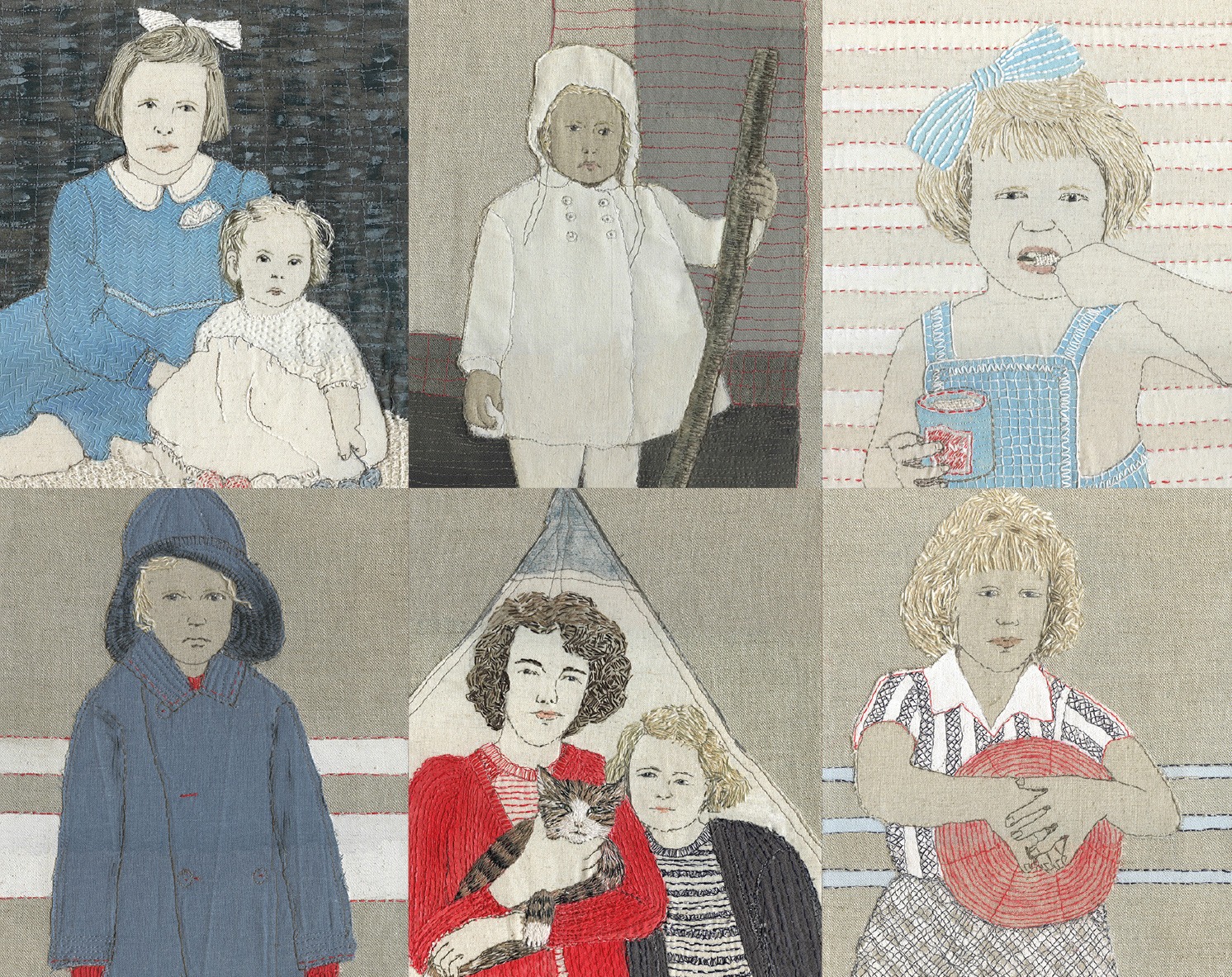
From rags to rags!
Grimsby. North East England. Some time in the late 1950s.
A little girl is playing with the contents of her mum’s button tin – a selection of buttons in various shapes, sizes and colours removed from old clothes. Clothes that were given to the rag-and-bone man in exchange for a goldfish!
A little while later she sits on her mother’s lap learning to sew those same buttons onto her doll’s clothes.
At junior school she struggles with hand embroidery; being left handed she finds it difficult to follow along with the right handed teacher. She finds herself constantly unpicking stitches because she hasn’t managed to make the correct number per inch.
Some five decades later she goes on to become the Chair of arguably the UK’s most influential group of textile artists, the 62 Group. Her work is described as ‘the most thrilling example of innovation in stitch’ by SAQA, and featured in best-selling art magazines, such as Embroidery and Fiber Art Now. She’s invited to be the featured gallery artist at the UK’s biggest textile art event The Knitting and Stitching Show.
This is the story of how that little girl became textile artist Sue Stone.
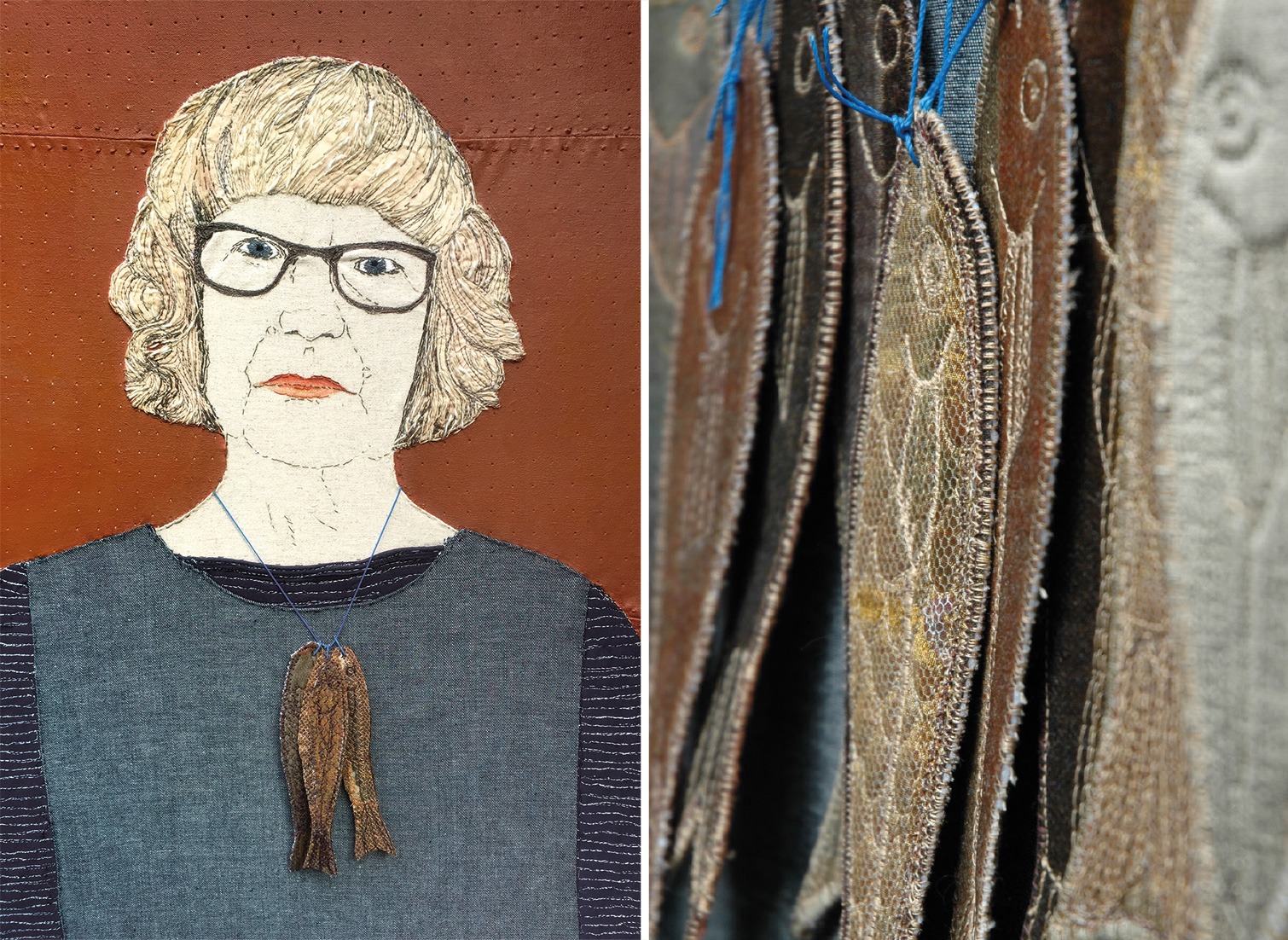
The journey
At the age of 50, Sue was grieving and lost. The last few years had been tough to say the least.
A nationwide recession had claimed the clothing business she’d poured her heart and soul into for nearly three decades. Old age and diseases had claimed four family members, including her own father Fred. And the bright lights of London had claimed her two sons, who’d left home to seek their fortunes!
With so little positivity in her life, Sue turned to the techniques and materials she’d grown up with for comfort. The techniques and materials she’d immersed herself in as a student of Embroidery in the 1970s. The techniques and materials she hadn’t used creatively in nearly 30 years.
With no job or family to care for it should have been simple and yet Sue struggled to make textile art a priority.
Some days she didn’t go near a needle and thread. Other days she would stitch mindlessly; half her attention on her favourite soap opera Coronation Street and the other half on the embroidery in her hand.
She had no focus. No goal. No direction.
And that would have been fine except for the nagging feeling that her potential was going unfulfilled.
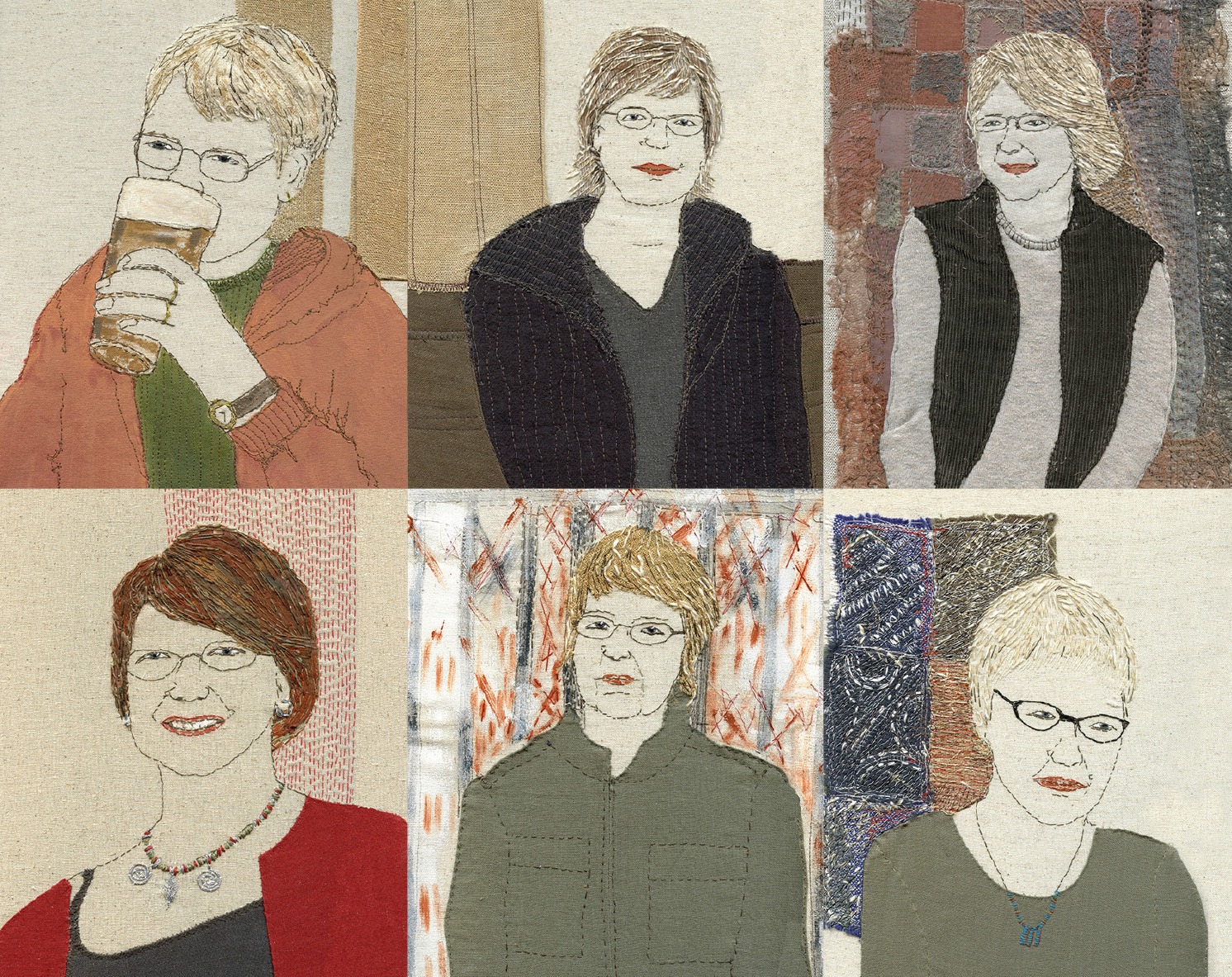
Submission & rejection
So as a means of motivation, Sue summoned all her courage and decided to make a piece to submit to the Embroiderers’ Guild exhibition Art of the Stitch. The subject would be the island of Lanzarote, a place that held fond memories of family holidays.
But Sue’s process was confused and she struggled to make decisions about the best way to interpret her subject matter through stitch.
The result felt generic and under-developed. There was no sign of a defining voice or visual identity.
It was rejected by the selection panel.
What went wrong?
Sue had been relying on the ‘hit and miss’ or ‘I hope it works’ method of creativity.
She had no clear plan in place. No guidelines. No focus.
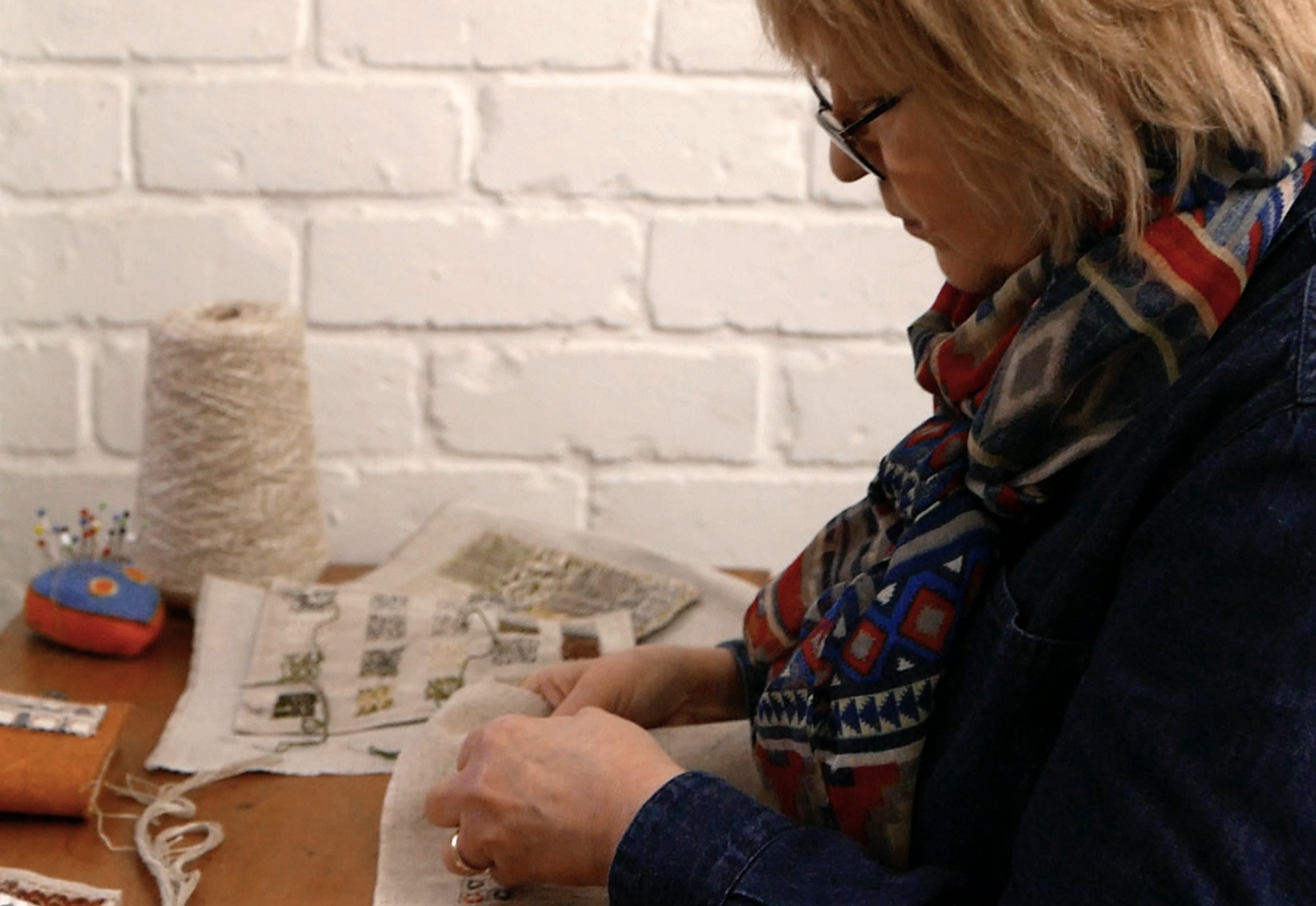
The turning point
Sue couldn’t face the idea of making another piece. Her confidence was on the floor and she was terrified of another failure.
Instead, she started making quick and easy samples back in front of the TV. To begin with, there was no aim other than to enjoy the feeling of needle and thread in hand without the pressure of making something ‘worthwhile’.
But with each new sample, she became more curious. She started to ask ‘what if?’ and try out different variations on basic stitches through trial and error. The discoveries she made gave her the impetus to practice more and more.
And she started hitting upon new and inventive ways to put her own slant on well-worn techniques.
Little did she know it, but this was the rawest version of a system for experimentation that would transform her textile art.
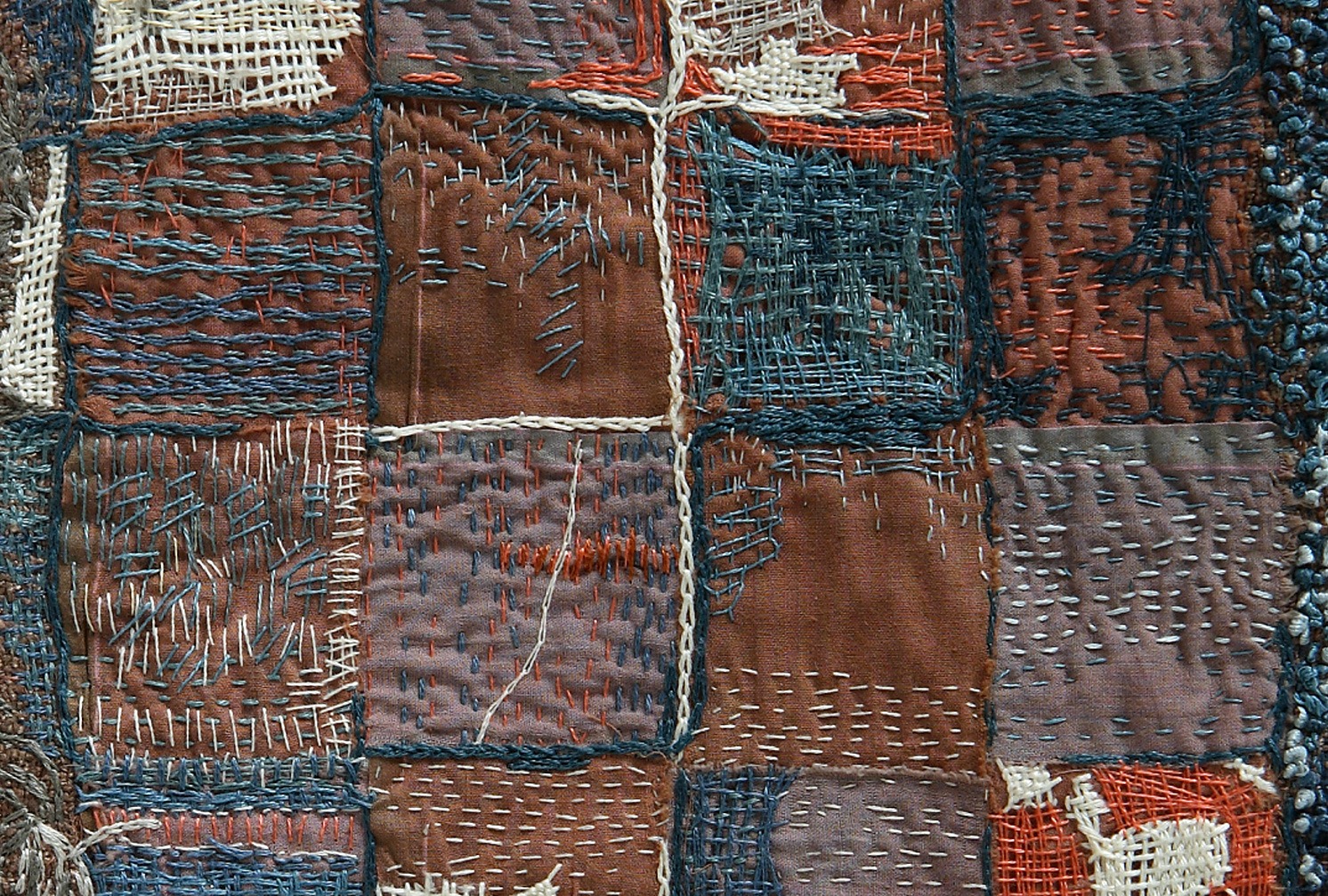
Forward momentum
Eventually, in 2003, a few of her samples made their way onto Christmas cards that Sue gave to relatives and close friends, one of whom was her ex-drawing tutor at Grimsby School of Art, Alf Ludlam.
Alf saw potential and gave Sue a set of photographs of the medieval Thornton Abbey as a source of inspiration.
The patterns and textures in the images fascinated Sue and she began exploring ways to emulate them in stitch.
This project galvanised Sue’s process and led to a full series of works on the same theme.
Her visual identity was not very distinct yet, but there were early signs of what would become her signature figurative style. And with each new piece her voice strengthened.
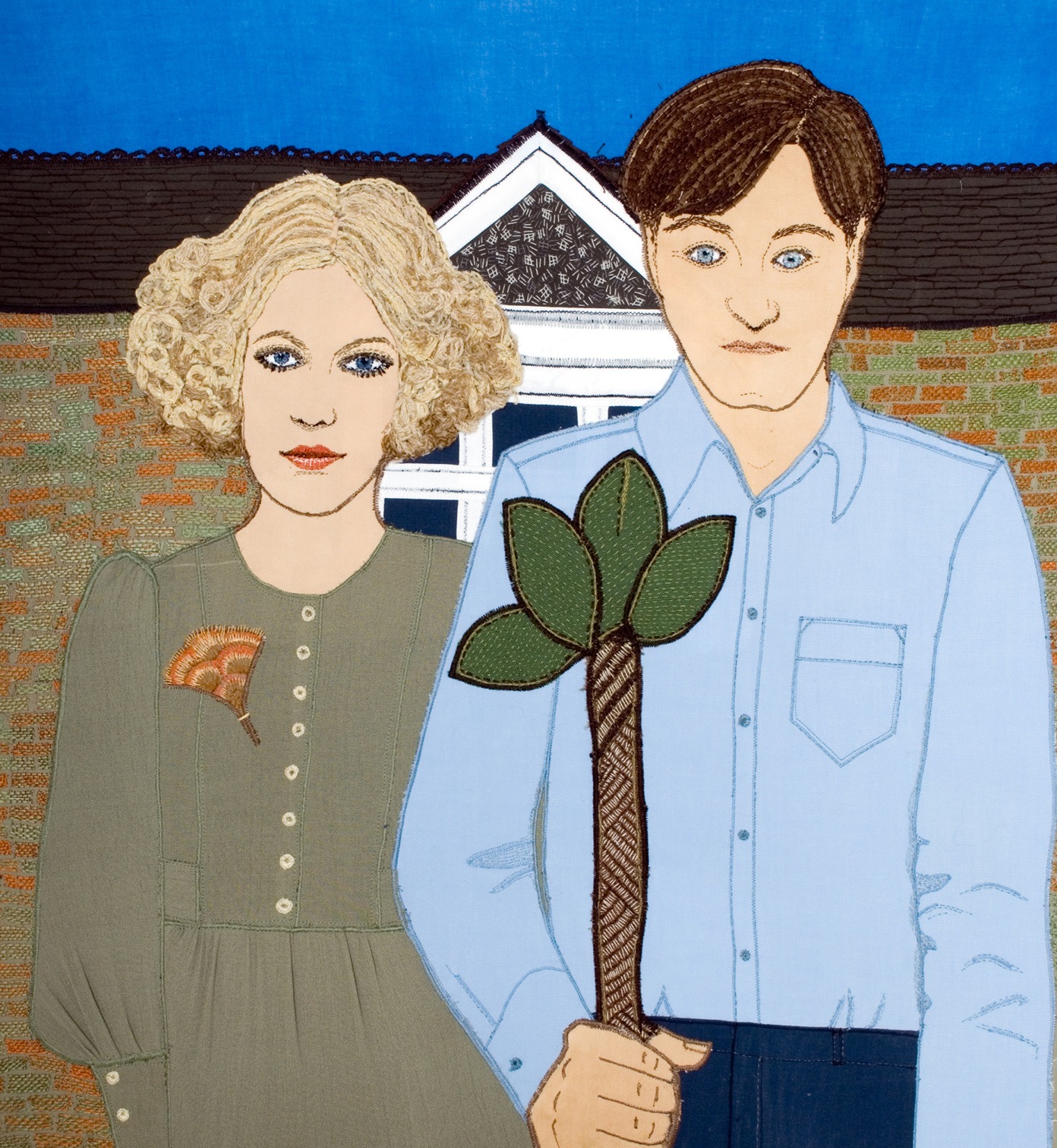
The benefits of sampling
By 2006, Sue had made hundreds of experimental stitched samples on which she had developed the ideas for over 50 completed pieces of textile art.
Without consulting Sue, Alf organised for the collection to be exhibited at the local library.
At the private view, Sue was so terrified that she spent the evening hiding around corners trying to avoid people.
But that exhibition marked the start of her journey to becoming one of the most respected textile artists in the UK. It gave her the courage to submit her work to Art of the Stitch once more.
This time two pieces were selected. And it spurred her on to apply for membership of the renowned 62 Group, of which she eventually became chairperson.
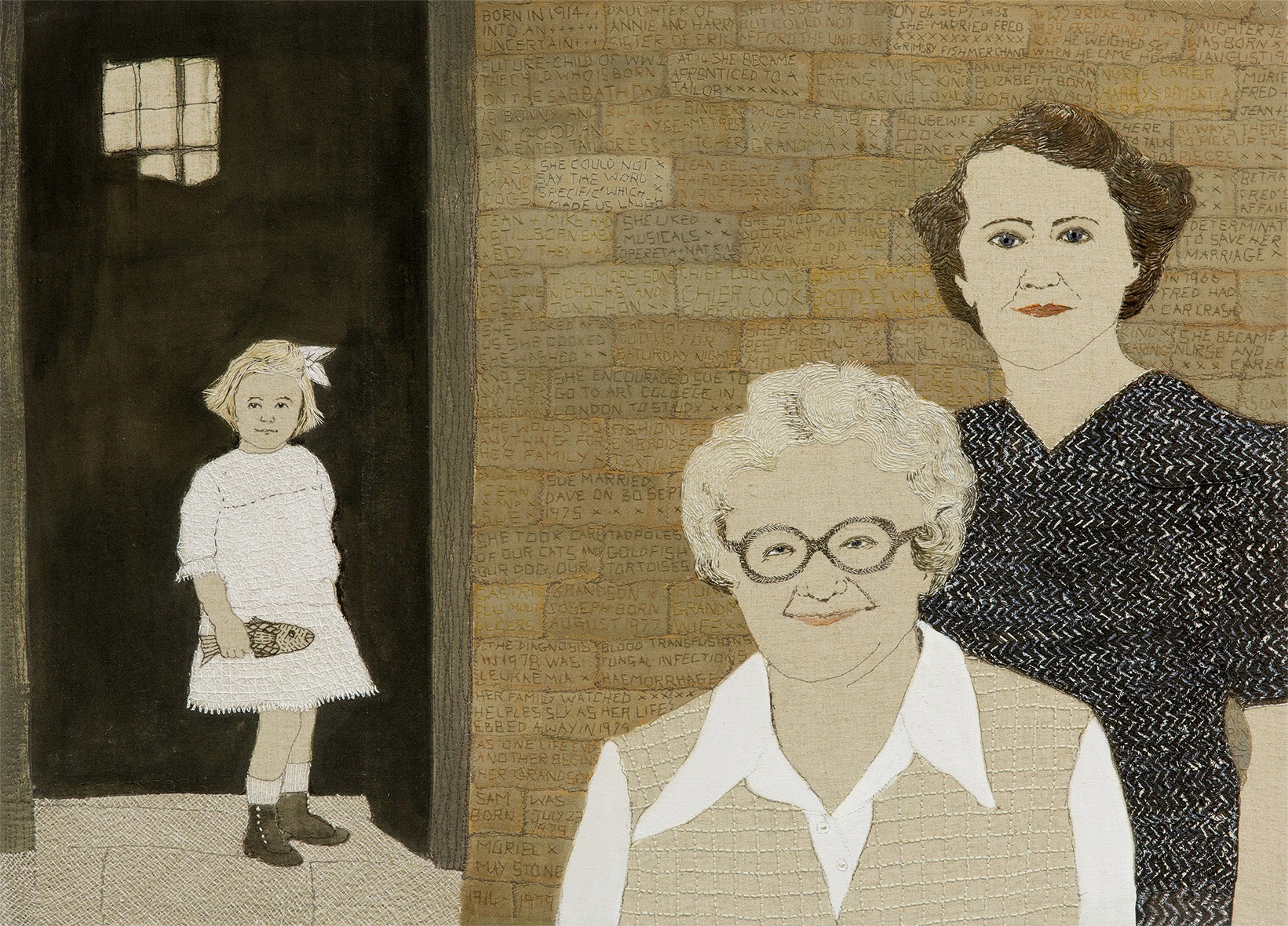
What changed?
That exhibition would never have taken place if Sue hadn’t been so productive in her practice. And she would never have produced so much if she didn’t feel a sense of progression within her work that kept her moving forward with focus. And her work would never have progressed in the way it did without a means of developing ideas in a structured yet playful way.
Over several years, Sue has refined the way she experiments with stitch, but it is still very much rooted in the foundations of purposeful experimentation.
She makes small samples to try out ideas and push the boundaries of her chosen techniques within predefined boundaries. She takes what she learns from one sample and develops it in the next, and actively seeks to incorporate these discoveries into her textile art, which means there is always a sense of progression.
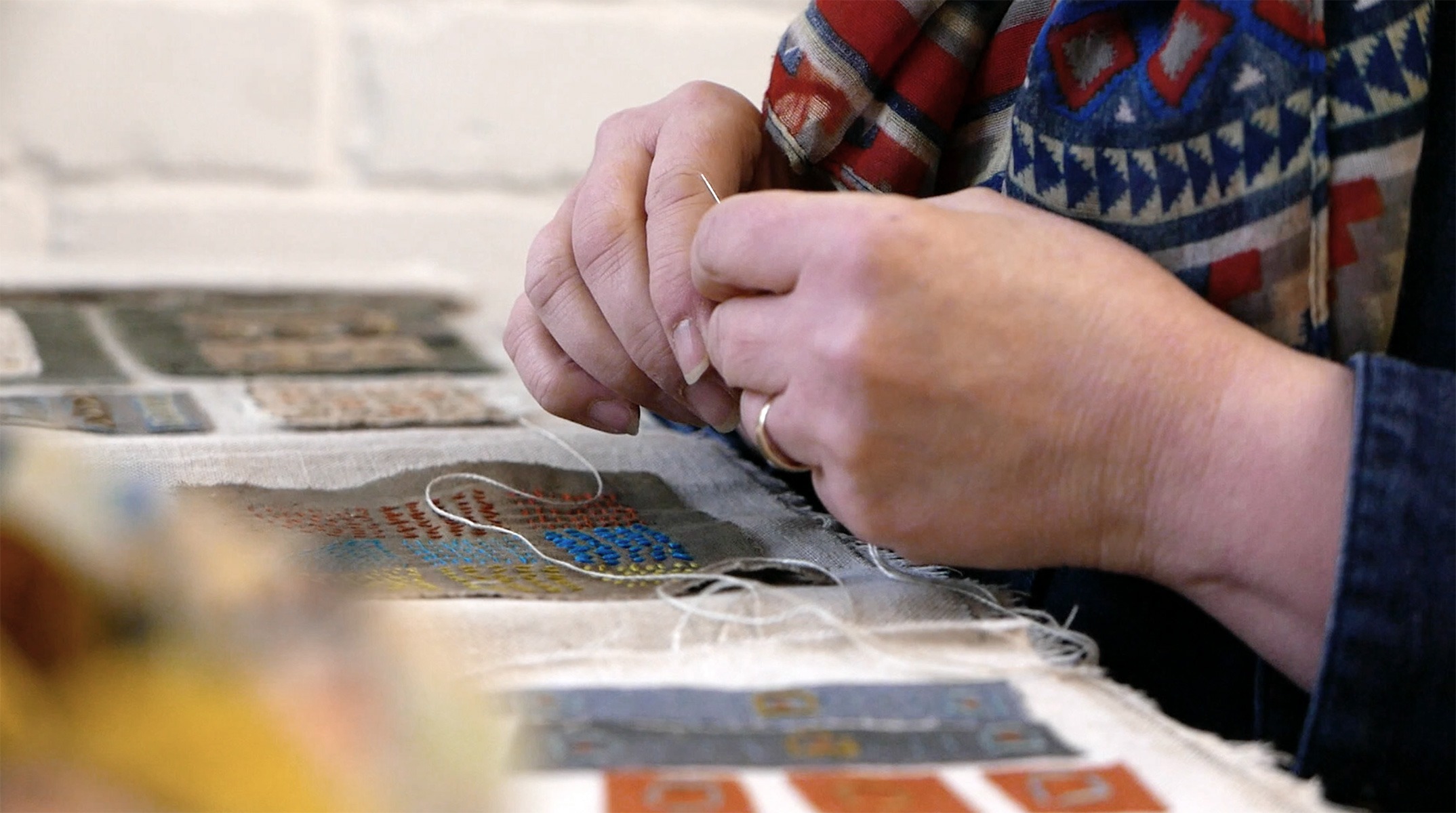
Reaping the rewards
Manageable bursts of experimentation have encouraged Sue to build a disciplined creative habit. And having a systematic way of developing ideas to fall back on, even when she doesn’t feel inspired, has helped her overcome procrastination because she has a powerful way of getting started every time.
But most importantly, this approach has allowed Sue to develop a visual identity that cannot be confused for that of any other artist.
And as her signature figurative style has strengthened, Sue has found herself being asked to exhibit more and more. And to share her expertise and passion with others in workshops the world over.
Sue Stone’s not alone
Here at TextileArtist.org, we’ve interviewed hundreds of successful award-winning artists enjoying the fruits of a career dedicated to what they’re passionate about. And the majority of them have some sort of system for experimentation in place.
Member of the Textile Study Group and director of Distant Stitch, Sian Martin believes that it would be impossible to bring her own unique artistic vision to reality without a creative strategy.
Sian starts a new work by rebuilding, removing, and adding to her pin board wall, building a collection that that will trigger the first thinking stages of a new piece of work.
“My father always said you only do one piece of work in your lifetime – just fine tuning and developing it over the years. Through the constant evolution of my sketchbooks and pin boards, I can now see value in the recurring thought. “
Sian Martin, Textile artist
So if you’ve been relying on the ‘hit and miss’ or ‘I hope it works’ method for creativity, maybe it’s time for a change?
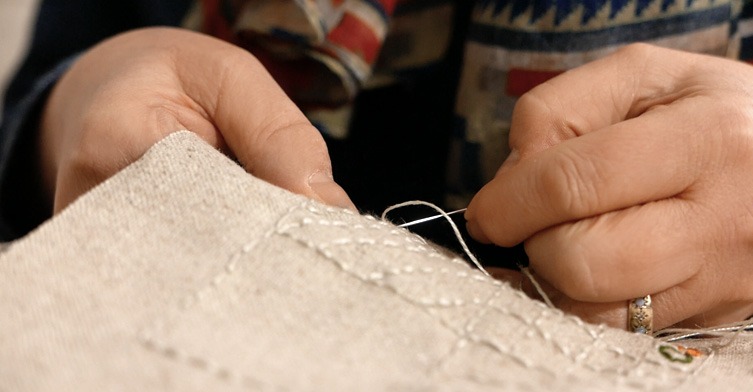
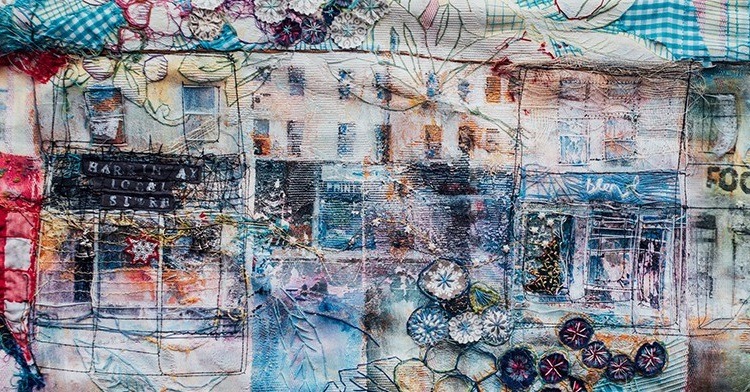
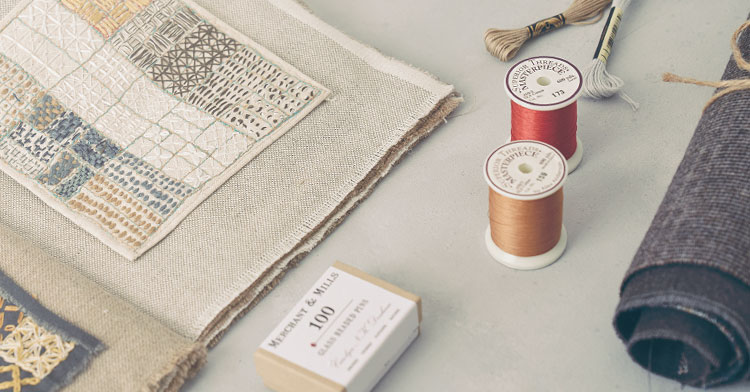
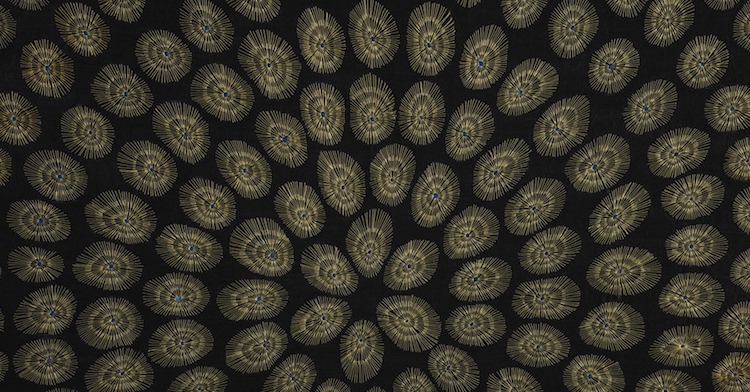
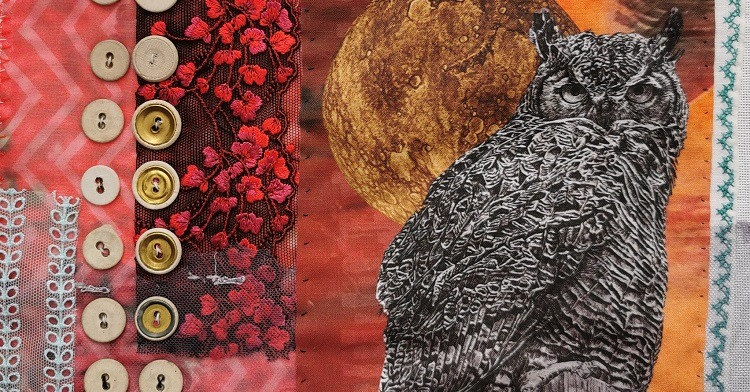
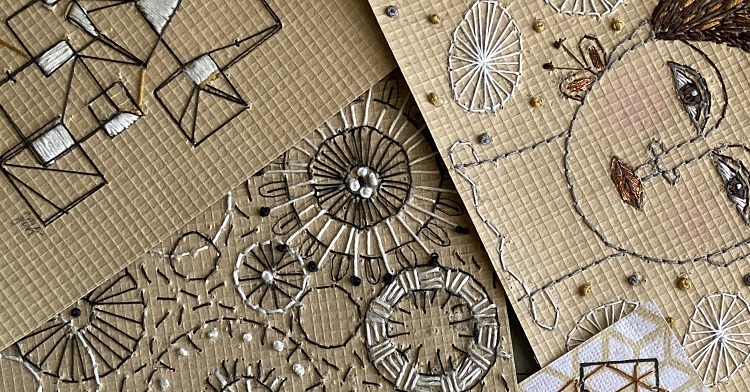
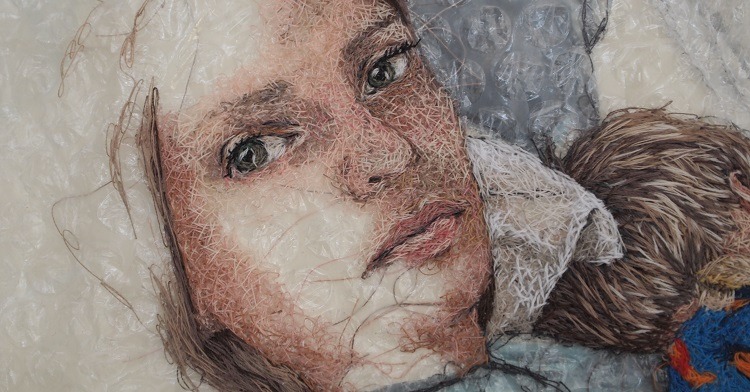
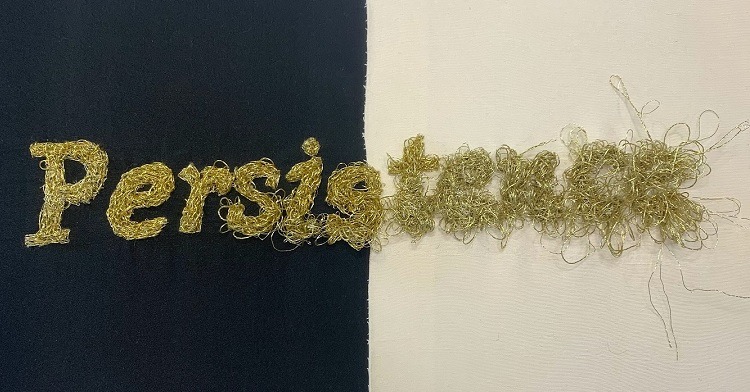
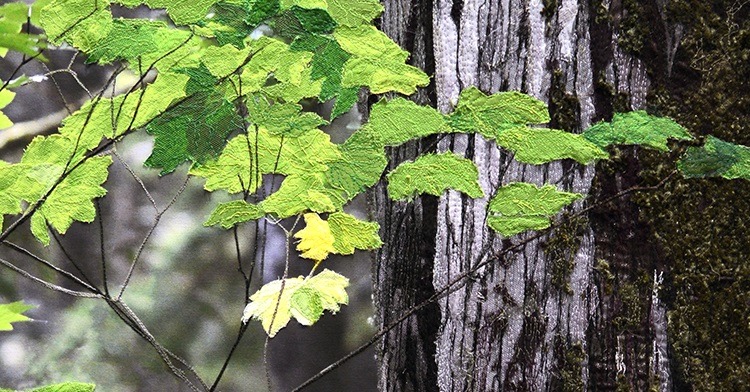
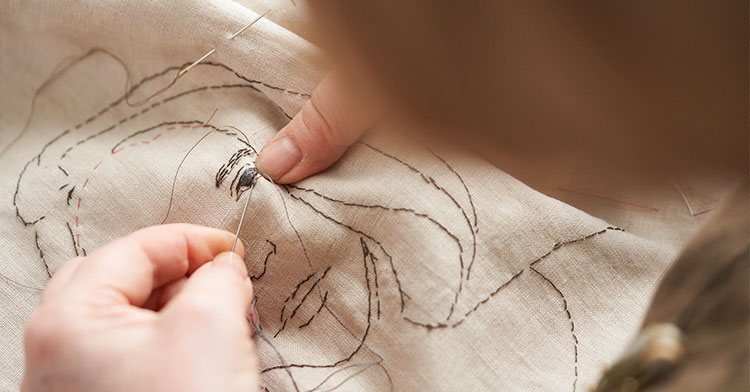
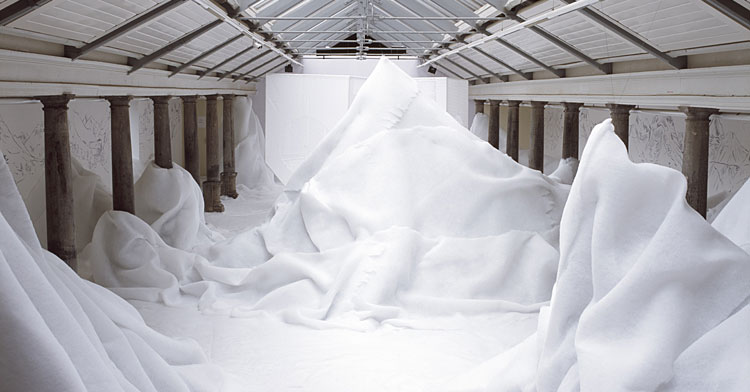
32 comments
Jean Webster
An inspiring story and so generous to help others.
Sondra von Gyllenband
This is great. I am a felter and I can see all kinds of ways this work can add beauty and value to what I am doing.
Thank you for you clear writing and inspiration.
Sondra von Gyllenband
New Braunfels, TX
Kim Goodwin
Thank you so much for the inspiring article. Your MUM has been such a beautiful heartwarming influence in my life. I don’t stitch much anymore, I can never make the time. I have never tried to do portrait work such as hers. But I love to look at her talent she warms my heart.
Penny Whitelock
That is such an authentic and inspiring story. Thank you for sharing .
Knipidee Fabric Store
Amazing content, I love this art. Thanks for sharing!
Daphne
This is a very inspiring story and has really encouraged me. Its very exciting to see that Sue brought up her family and then started a rewarding creative career, not having just come out of art college as a fresh faced 20-something, using creative skills learnt in childhood. To me, this means everyone should all take their inner creativity seriously whatever age or stage of life because it doesn’t go away or diminish with time.
Hazel
Hello,
You are great sons and so proud of your Mum!
Thankyou for all your encouragement. I am exactly where Sue was in that I am now on my own and have no focus or clear plan and yes, I have to admit I am scared to try what I know deep down I can do, and I don’t really understand why. Perhaps I’m afraid of success which sounds really odd I know but what if I really was successful? What would happen? I’m used to coping with not having anything and that feels safe but I don’t know how I would cope if people actually liked my stuff.
Wow, I’ve just reviewed what I’ve written and it sounds a bit deep – apologies! I think I have spoken out the answer to my problem – thankyou for bringing it out.
Bless you. I look forward to receiving your emails. I don’t know what I can do for you in return.
Sohan Greenwood
I cried when I read your story. It was as if you were inside my mind. Then, reading the comments, I see I am not alone.
Thank you for sharing your story.
Susan
Carol White
Thanks for your amazing story Sue. After following a few inspirational websites and FB groups, I’m getting the itch to transform the threads of ideas into something a bit more substantial but found I have a fear of trying out ideas and getting organized. I used to paint when I was a teenager and loved artistic endeavors since. I dabbled in embroidery, knitting, macrame, sewing but life got too busy to pursue. I also worked professionally as a textile designer but only reproduction of other people’s artwork for industrial printing. After that process moved off to China, I transferred to R&D for denim production so thread, fabric,texture, structure were still following me.My problem now is experimenting with techniques eg if I try fabric painting for embroidery background, will it bleed or run after washing? I have 2 sewing machines recently renovated and ready for action- which fabrics with which threads and which needle etc etc. With so much research to do, I’m just overwhelmed and not getting further than basic embroidery. I have downloaded your .PDF so thank you and have bought a magnifying lamp with the hope of progressing..fear and trepidation with a glimmer of hope
Sue
Thank you so much for sharing your story, Sue. I too turned to my sewing machine for comfort during a difficult time in my life and after my children left home. I am drawn to textile art and have made a few submissions to our annual quilt festival in our little rural town in Kentucky. I am the “odd duck” because most people here subscribe to the traditional way of quilting. Never the less, I am forging on with my own vision and techniques. I am loving learning more from you and your group of talented artists.
Annette Bailey
Hi Sue .really enjoyed your fb story and can empathise with a lot that you say i.e. I love to relate back to my family Heritage ,history and generally life experiences which to me is interesting while telling a personal story in textiles and stitch. Social issues ,like child abuse etc,political issues that seriously destroy people’s lives i.e. Immigration ,conflict , wars ,asylum issues and many more THINGS is really what I want to portray in stitch to show an awareness to the viewer in a sort of Contemporary way .But my problem is often art groups and Galleries don’t want to exhibit anything that might relate to sensitive issues or personal stories, especially if it’s a ‘ not for sale ‘ piece . Would appreciate your opinion on this . Love your 62 group ,lucky to have seen a couple of your exhibitions. Cheers Annette .
Pat
Wonderful! – thank you for sharing XOXO
Rosie Doyle
The challenge of finding a method or a way into developing work really resonates with me. I struggle to find a way of making textile art, rather than craft. By which I mean, I have ideas of nice things to make, sometimes experimenting with materials or techniques, or sometimes because I have the urge to make a scarf or a coat or whatever (I am a feltmaker). But I feel as if I have other things I want to express through my textiles, I just don’t quite know how to make the leap from making ‘things’ and making ‘art’. Any suggestions? (By the way, I am a midlife maker as well!)
Thank you and your boys for all your inspiration.
Lynne Lewis
I think you use paint on the backgrounds. What type of paint do you use how much does it cost and where can you buy it? Would any other type do which may be available locally for example airbrush paint? Thanks LL
sue stone
Hi Lynne,
I use just normal acrylic paint which you can buy at any local art supplier or even in some supermarkets.
michèle b. fitzgerald
Thank you for such an open, heart-felt story of your process and evolution. Art always helps me enjoy better my years of survival, getting the most out of every day I am given. Michèle
Carol K Boyer
Great piece. Thanks for the mental support- I so often feel I am lost in the woods of my own thoughts. But keep putting one stitch down at a time and things move forward….
Gillian Moss
Sue what amazing sons you have, they have obviously helped keep moving forward with their sheer enthusiasm and love for you.
What about routine/ structure? Do you work better at certain times of the day? Is a deadline a good impetus? Do you like to have a cuppa nearby, tea or coffee?.
sue stone
Hi Gillian, Thank you for your question. I am very disciplined in my approach to my work. I always do any computer work I need to do in the morning and always do machine stitch during the day and whilst I may occasionally do hand stitch during the day I am more likely to be found hand stitching in the evening as that’s what works for me. I am very lucky in that I have my husband nearby to supply me with copious cups of tea and coffee. As my studio is in our loft that means he has 2 flights of stairs to climb to deliver the tea/coffee but as I say to him. “It keeps you fit.” And yes having a deadline to work to does give the impetus to get things finished.
Agatha
I can see a transformation in the techniques from the Thornton Abbey piece to Sue ‘s current work. Do artists tend to slowly evolve over time with their techniques or do we occasionally go back to them?
sue stone
Hi Agatha, Sue Stone here. Thank you for your question. I actually use the same techniques I used way back in college but the way I use them has changed. So I use mainly hand stitch and appliqué with some machine stitch and recently I have added paint into the equation. What has changed more than anything are my ideas and subject matter but I do occasionally resist ideas I’ve used before.
Nancy Claiborne
Question: Are your samples available for on-line viewing, or (even better), perhaps a book?
I am an obsessive sampler, and would love to know how you organize your samples. Retrieving information, when you’ve amassed years of it, can be a struggle, and I could use some help there!
sue stone
Hi Nancy,
Sue Stone here.Thanks for your question. I keep my samples organised by putting them in “Stitch Books” which are my equivalent of sketch books. They are organised by category i.e. hand stitch , running stitch, backstitch, cross stitch etc, appliqué, needle weaving, strip weaving etc. They are not online or in a book at present but may be at some time in the future.
Nancy Claiborne
Thank you! I look forward to reading more about the samples.
mirjam Bruck -Cohen
THANK you fro bringing her story Thank you SUE for your extra ordinair art that speaks to me !!! mirjam [fiberartist]
June Ross
‘The Wedding’ reminded me of ‘American Gothic’ by Grant Wood………..
Angie Willis
A lot of the work of textile artists I admire is done with predominantly machine stitching but I prefer to have a needle and thread in my hand – how much easier to transport and work on at odd moments; impossible with a machine. Do you, Sue, use machine or hand stitching or both?
Patricia
Thank you for your web and articles! Just great!
Alice Oelofse
so inspiring beautiful story – thank you!
Jennifer Gould
I downloaded the “3 Pillars” but it says Blocked Plug-In… can you help or suggest a fix?
Joelle
I got the same thing on my desktop IMac…..when I googled the problem it said I needed to upgrade flash player. Haven’t done it yet so I don’t know if that will work.
Lindsay Olson
One of the things I love so much about your creation/publication is the combination of humanity and technical information. Sue Stone, thank you for sharing your story. You inspire me.